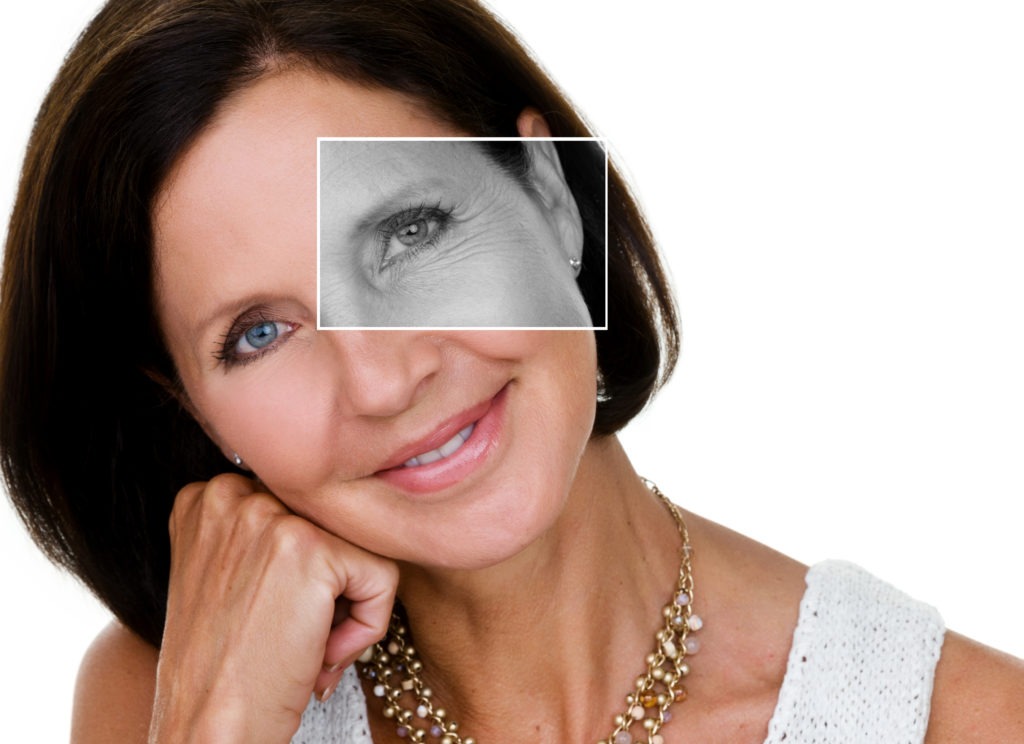What are Botox and Dysport?
Both Botox and Dysport are brand names of a toxin produced by the bacterium Clostridium botulinum. When administered in small amounts, these botulinum toxin injections can safely block muscle contractions. While they are occasionally used to treat muscle spasms which result from neurological disorders, Botox and Dysport are more commonly used cosmetically to treat facial wrinkles.
How do Botox and Dysport work?
Botox and Dysport are nonsurgical forms of wrinkle treatment in adults. These cosmetic injections help to temporarily reduce the appearance of wrinkles by relaxing the muscles beneath the skin. As the muscles relax and soften, the skin above them turns smoother, making wrinkles appear less noticeable. Follow-up injections are necessary to maintain results once the temporary effects fade.
Several factors can cause facial wrinkles, including the reduction of collagen production in the skin over time, sun damage, smoking, genetics, and poor nutrition. Botox and Dysport are unable to treat these types of static facial wrinkles which are caused by the loss of skin elasticity. Instead, Botox and Dysport target dynamic facial wrinkles caused by repeated muscle contractions from frowning, squinting, or raising eyebrows.
What is the difference between Botox and Dysport?
Both Botox and Dysport contain a similar active ingredient, but the potency of trace protein amounts can vary between the two. As a result, one treatment may be more effective than another for some people.
The major difference between Botox and Dysport is that Botox is approved to treat forehead lines, crow’s feet (lines around the eyes) and glabella lines (lines between the eyebrows that extend upward toward the forehead), while Dysport is only approved to treat glabella lines. Dysport can help treat moderate or severe glabella lines, but is not recommended to treat mild glabella lines.
The similarities and differences between Botox and Dysport are summarized in the comparison chart below:
| Botox | Dysport | |
| Procedure type | Nonsurgical. | Nonsurgical. |
| Treatment areas | Glabella lines, forehead lines, and crow’s feet. | Glabella lines. |
| Pain | Minimal to no pain felt during treatment. | Minimal to no pain felt during treatment. |
| Treatment permanency | Treatment is temporary; follow-up treatment is required after a few months to maintain results. | Treatment is temporary; follow-up treatment is required after a few months to maintain results. |
| Expected results | Results can typically be seen within one to two weeks, but may appear in as little as 24 to 48 hours after treatment. The results are temporary and last between three to six months. | Results can typically be seen within two to three days. The results are temporary and last between three to four months. |
| Recovery time | Little to no recovery time. | Little to no recovery time. |
| Cost | $10 per unit. | $10 per unit. |
How long do the results of Botox and Dysport last?
Botox and Dysport are only effective for the temporary treatment of wrinkles. As the effects of Botox and Dysport fade, muscle action gradually returns and wrinkles begin to reappear. Therefore, both Botox and Dysport require follow-up injections to maintain results.
The effects of Botox injections can generally be seen within a week to two weeks, but it may take up to one month to see full results. However, some patients may begin to notice results within 24 to 48 hours of treatment. Botox results can last between three to six months for moderate to severe frown lines.
In contrast to Botox, the effects of Dysport injections can typically be seen within two to three days. Dysport results typically last between three to four months before a follow-up treatment is required.
In summary, the effects of Dysport may appear sooner, but the effects of Botox may last longer.
Which cosmetic injectable is right for me – Botox or Dysport?
While both Botox and Dysport can achieve similar results, one may be more suitable for you based on your desired treatment area. Given the differences between the two, it is important to talk to an experienced medical aesthetics injector to determine the best wrinkle treatment needed to achieve your desired result.
Who is qualified to administer Botox and Dysport?
Only medical aesthetics injectors trained in each type of cosmetic injectable are qualified to administer it.
What can I expect from the medical aesthetics injector administering Botox or Dysport?
A qualified and experienced medical aesthetics injector should provide patients with detailed information about what to expect from a facial wrinkle treatment, including possible side effects. She should also discuss treatment expectations, costs, and the necessity of any follow-up treatments. Finally, she should answer all your questions regarding treatment, products used, and aftercare.
How are Botox or Dysport administered?
After developing a customized treatment plan with you, the medical aesthetics injector will first cleanse and prepare the area to be treated. Then, she will either numb the treatment area briefly with ice or apply a mild topical anesthetic to help alleviate any pain felt during the treatment. She will then inject the selected cosmetic injectable (either Botox or Dysport) into the specific muscles of the treatment area (between the eyebrows, forehead or outer eyes) using an ultra-fine needle. Multiple injections may be required depending on the area being treated and the desired results. The injections themselves only take a few minutes, while the entire treatment takes less than an hour.
Is treatment painful?
Some patients experience minor discomfort during treatment. The medical aesthetics injector may apply ice to numb the treatment area prior to injection or may apply a mild topical anesthetic to the treatment area prior to injection to make treatment more comfortable.
How should I prepare for my appointment?
In preparation for treatment, patients should avoid consuming alcohol at least one week prior to treatment and avoid taking blood thinners (such as aspirin), muscle relaxers, and anti-inflammatory medications (such as ibuprofen) two weeks prior to treatment to minimize bruising at the injection site.
What are some possible side effects of Botox and Dysport?
It is essential to consult an experienced medical aesthetics injector when considering an injectable cosmetic procedure. Patients should familiarize themselves with the risks and potential complications of a cosmetic injectable procedure before receiving treatment.
Both Botox and Dysport are considered safe for suitable candidates. Potential but temporary side effects include bruising, pain, numbness, and headaches. More adverse side effects include droopy or swollen eyelids, nose and throat irritation, injection site pain or skin reaction, upper respiratory tract infection, sinus inflammation, nausea, general muscle weakness, dizziness, tiredness, vision problems, and muscle spasms. Severe complications from using Botox or Dysport are rare, but can result in botulinum toxicity and cause symptoms such as difficulties breathing, speaking, and swallowing. Botox may also cause paralysis, though this is extremely rare.
Minor side effects are often temporary and generally disappear within one week of treatment. Some side effects, such as droopy eyelids, may last up to three weeks. If inflammatory reactions persist for more than one week, or if other adverse side effects develop, patients should consult a medical professional as soon as possible.
Who should avoid using Botox or Dysport?
In order to reduce the risks associated with Botox or Dysport, patients should avoid treatment if they:
- are allergic to Botox or Dysport or any of their ingredients
- are allergic to cow’s milk protein
- have had an allergic reaction to any other botulinum toxin product such as Myobloc or Xeomin
- have a skin infection at the planned injection site
- are under 18 years of age or over 65 years of age
- are pregnant or breastfeeding
- have neurological diseases
What can I expect in terms of recovery after my treatment?
Neither Botox nor Dysport require recovery time; patients can return to their daily routine right after the medical aesthetics injector completes the treatment.
How much does treatment with Botox or Dysport cost?
The price of each treatment varies depending on the treatment area and the dosage of Botox or Dysport required to achieve the desired result. At Silhouette Spa and Laser, our medical aesthetics injector will customize a treatment plan with you based on your aesthetic goals and will advise you on recommended treatment options and their associated costs.
Here is a summary of the average required dosage of both Botox and Dysport:
Glabella lines: 20 total units – 5 injection sites
Glabella and forehead lines: 40 total units – 10 injection sites
Crow’s feet: 24 total units – 6 injection sites
All three areas combined – 64 units
Our current pricing for Botox or Dysport is $10 per unit. For up to date information about pricing, please visit our Botox & Dysport Cosmetic page.
To learn more about Botox and Dysport or to book an initial consultation, please speak with our experienced Silhouette Spa and Laser staff members. We will gladly answer your questions and provide you with additional information.
References

